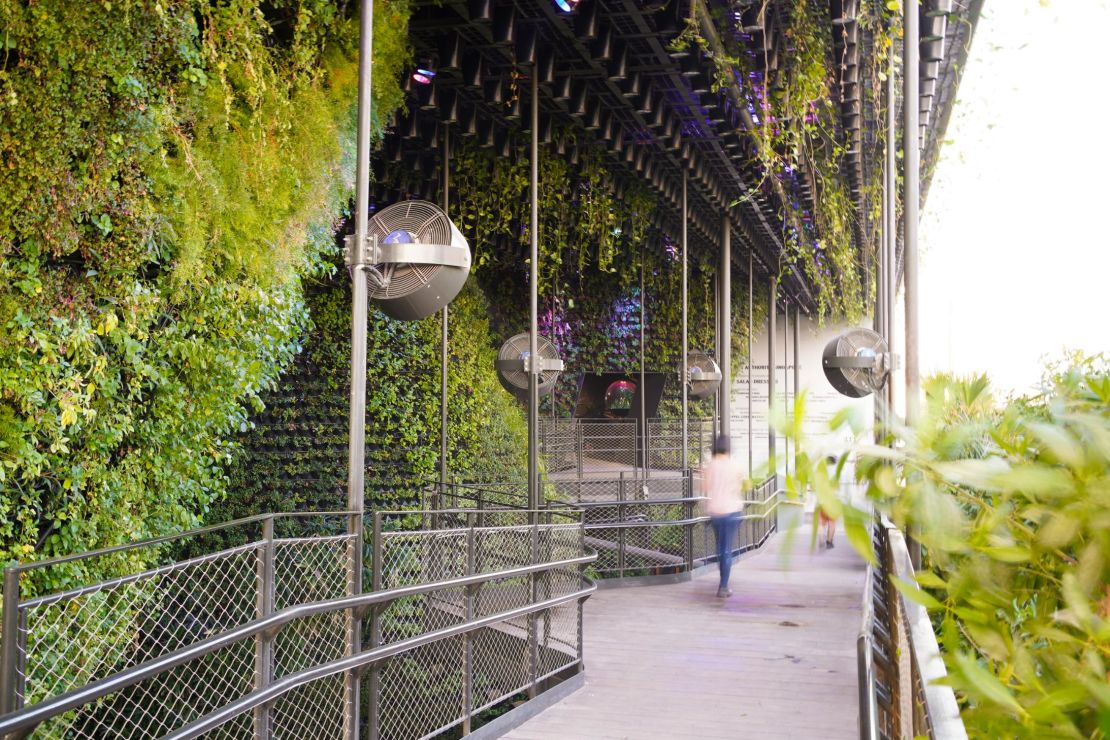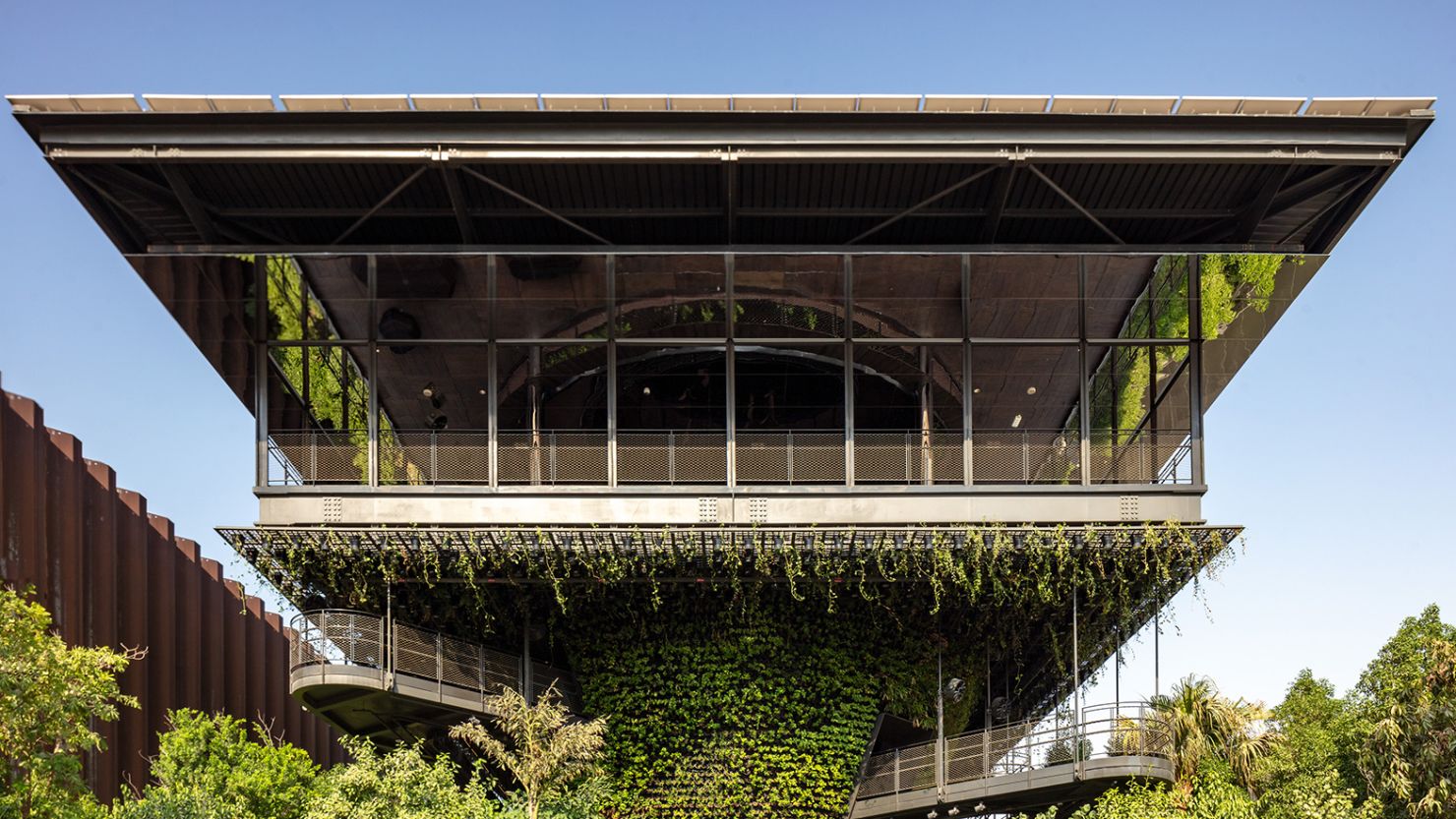There is no shortage of eye-catching structures at Dubai’s World Expo, but the lush greenery of the Singapore Pavilion makes it a standout. Built around three massive plant-covered cones, the pavilion isn’t a traditional enclosed building, trading walls for a green belt of trees and plants capable of creating their own microclimate.
Visitors enter through a garden meant to appear as an oasis in the desert, which connects with Singapore’s reputation as a “City in Nature” and offers a corner of calm in the middle of the bustling Expo. “But it’s not just a pavilion filled with greenery,” says Phua Hong Wei, director of WOHA, the Singapore architecture firm that designed the pavilion. “It showcases the coexistence of architecture and nature. It demonstrates that buildings can be designed as a responsible and sustainable environment, achieving net-zero energy and water in the desert. It becomes a prototype with strategies that are scalable and adaptable, from buildings to cities.”
Inside, the three nine-meter tall cones function as thematic areas, under the shade of a hanging garden. In the City Cone, a film narrates the rise of urban areas and the challenges threatening the natural world; in the Rainforest Cone, a high density of plants imported from Singapore recreates a slice of thick jungle; and in the Flower Cone, darkness sets the atmosphere for a visual feast created by a myriad of orchids.

Green technology
The structure is designed as a series of linked systems, inspired by nature. A canopy over the top, with more than solar 517 panels, generates clean energy that powers everything. Water is drawn from the ground and desalinated to irrigate the plants and provide cooling via mist fans; these use high-pressure nozzles to create a fine mist that lowers the perceived temperature by 6 to 10 degrees Celsius, keeping the pavilion cool in the desert without using air conditioning.
Expo 2020 Dubai unveils its eye-catching pavilions
The greenery covering the ground, walls and ceiling acts as a natural surface to keep the temperature down and filter the air. Small robots traverse the green walls, equipped with cameras and sensors that monitor the health of the plants and collect data such as humidity and oxygen levels. With that information, the amount of water is calibrated for irrigation and grow lights are adjusted.
“The climate crisis reminds us that humans are part of the larger ecosystem and we cannot ignore the impact of human actions on the planet,” says Phua. “The Covid pandemic is another alarm bell that made us realize how valuable access to space and nature is. Both are critical reminders that we have to actively and urgently care for the environment. The pavilion takes an approach that buildings should do more, give back and make a positive impact on our environment.”
On the top floor, a “sky market” offers a space filled with vendors and workshops, and a circular gallery illustrates Singapore’s relationship with nature. The theme of the pavilion is “Nature, Nurture, Future,” intending to show how nature, technology and architecture can be integrated, and highlighting the city-state’s track record in this area. Although densely populated, almost half of Singapore is covered in trees or vegetation, with this “green coverage” growing from 36% in 1986 to nearly 50% today.
According to Phua, many of the technologies implemented at the pavilion can be replicated in other buildings, or even at a city-wide scale. “Our solar canopy, desalination plant, auto-irrigation system and dry mist fan are integrated systems that enhance and improve the environment,” he says.
“By incorporating nature into our buildings and cities, and protecting our natural spaces, flora and fauna, we can take crucial steps in the fight against climate change.”




















